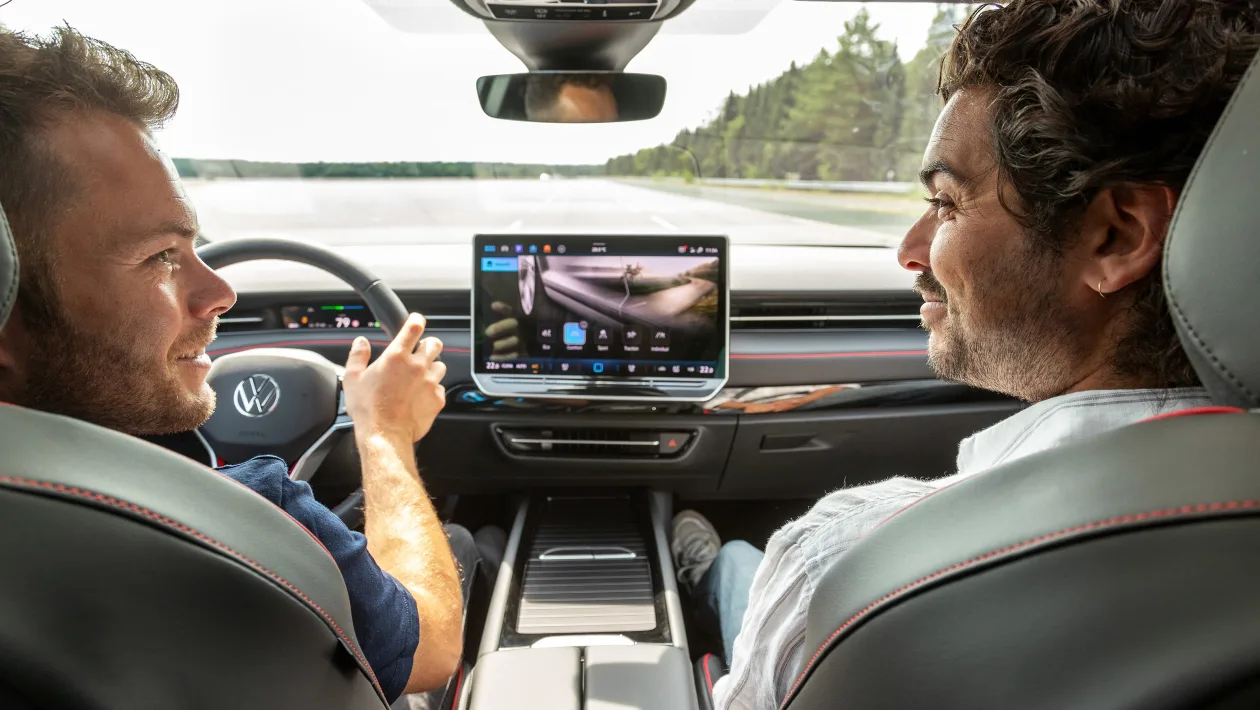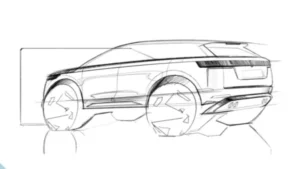New Volkswagen ID.7 GTX ride review: promising signs for VW’s performance flagship
We get a first taste of the new all-electric Volkswagen ID.7 GTX from the passenger seat





Verdict
On first impressions the Volkswagen ID.7 GTX is a solid step in the right direction for VW’s engineering department. The GTX’s job isn’t to be an out-and-out sports saloon, and on value and performance it will have some tough competition when it lands in the UK later this year, but there’s still lots of progress being made, promising exciting things for the brand’s future high-performance electric cars.
Volkswagen’s flagship ID.7 GTX is almost ready to be put under the scrutiny of the media and customers. But before we run out and drive it ourselves, Auto Express got an exclusive invite to join some of the team behind its development, to give us the rundown of why they think it’s destined to be a watershed moment for the brand.
Before we get into the details, it’s worth having a quick brush up as to what exactly the ID.7 GTX is. The standard ID.7 is already a model we’ve praised for its impressive efficiency, practicality and comfort, something the GTX will build on thanks to a potent dual-motor setup with 335bhp and a range of specialised chassis tweaks. The GTX’s range is rated at an impressive 366 miles, and it’ll hit 62mph in just 5.4 seconds. These upgrades all aim to make the ID.7 both more engaging and dynamic to drive – something the team are eager to show us.
As VW’s largest passenger car on the MEB platform, (the ID. Buzz is technically a commercial vehicle) this model doesn’t only act as an all-electric alternative to traditional ICE models like the Passat, but also an example of the brand’s flagship EV technology.
Torsten Zobel is one of our chassis gurus for the day, and tells us: “The GTX is meant to have a very wide remit, from remaining as comfortable and efficient as any normal ID.7 on the one hand, but also something that feels more dynamic and engaging when the driver wants.”
As such, both the GTX and Tourer receive unique suspension updates, including bespoke tuning for the adaptive dampers – or Dynamic Chassis Control in VW speak. There’s also new software for the XDS+ virtual traction management system and the progressive steering. These join the uprated electric motors, which draw power from an 86kWh battery pack.
None of these elements on their own are particularly dramatic, but sat alongside racing driver and fellow chassis engineer Benny Leuchter, he’s eager to show us just how significant the improvements are by looping some of the tracks inside VW’s Ehra Lessien test facility in the north of Germany. Leuchter reiterates to us: “This is a GT, so the spread between sport and comfort is so wide, it ticks both boxes. We think we’ve made a lot of progress in finding that balance.”
Key to this is the ID.7 GTX’s VDM, or vehicle dynamics manager. Control systems like this are often lost in a sea of more tangible hardware, but Leuchter tells us: “The vehicle dynamics manager is critical now, because it combines all of the adaptive elements to work with one another. The idea isn’t to make an ultra sporty experience, but to make [the car] feel smaller and more engaging.”
Depending on the selected driver mode, the VDM gives the ID.7 the ability to actively manage all the individual chassis and powertrain elements as one. Driving through a bend, the GTX can decide to generate more power from its rear motor, lightly brake an inside wheel with the XDS+ system, pump up the damper rating on the opposite side to improve traction, and even allow a subtle overdrive from the outer rear wheel. All without the driver noticing anything other than a clean and accurate arc through a corner.
Leuchter continues: “When switching between sport and comfort, we want to change the character, but not the behaviour. There has to be some benefit to selecting sports mode beyond just having stiff dampers, and this is something made possible by the VDM and the chassis engineers that we have.
“We can also play with the recuperation to make it feel more agile. We place more regeneration on the front motor than the rear to put more weight on the nose,” he tells us. “This helps the car turn in and will tighten the radius without needing to use any more steering input. We think this is a really nice feeling, and one we’re constantly experimenting with.”
The sense from the passenger seat is one of control and excellent calibration, giving the car an impressive ability to generate high corner speeds without pushing the car out of its comfort zone. This is made even more impressive when it’s revealed to us the ID.7 GTX weighs a not insignificant 2,328kg.
While we’ll need to get behind the wheel ourselves to be absolutely sure – something we’ll do very soon – the ID.7 GTX is evidence that VW seems to finally be on the front foot with its high-performance EVs. Volkswagen is making sure that with every new model, its engineering teams continue to learn and improve.
The ID.7 GTX, specifically, will be a niche car in the UK. But it shows real progress that will benefit the more mainstream that are still to come, including the first all-electric GTI model we know is on its way.
When we question Leuchter about the company’s progress on the electric GTI, he replies: “We’re definitely learning lots, and gaining a lot of confidence about how to make electric cars drive well. We can’t rely on our 50 years of experience [with GTI] and apply that knowledge from petrol to EVs without any changes. But we’re really happy with the GTX, and are excited to show off what we’ve got coming up next.”






